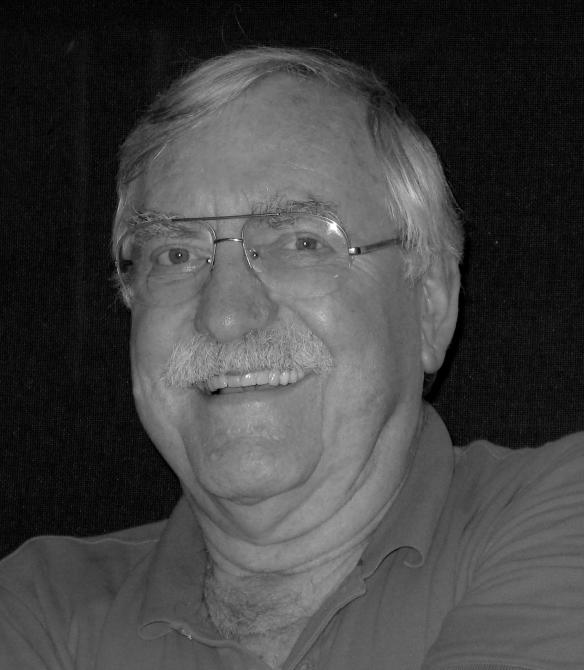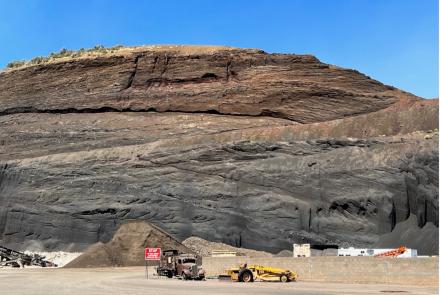Witness to a revolution
Carl's Corner-Copia - Carl Bowser, Ph.D.
Note: The post below was originally published in the Geological Society of America Foundations, “GeoTales IV” in 2009. Having been fortunate enough to span the days of the plate tectonic revolution (for me, starting in 1955), I’ve been impressed by the long efforts to fit all the pieces together and to learn how to ignore established dogma. What today is published as established fact to students ignores the exciting work that led to modern plate tectonic theory, a gap that needs to be filled only to realize how it exemplifies the long and sustained work needed to fully define this major paradigm shift. Some names listed below may not be familiar to you, but they should be. It’s worth searching the 1950-1970 literature to see their importance in the revolutionary thinking that led to what we take for granted today. If nothing else, reading Naomi Oreskes’ book “Plate Tectonics: An Insider's History Of The Modern Theory Of The Earth” (2001) will help you appreciate the people, the institutions, and collaborations that wrote the seminal papers on the issues.
WITNESS TO A REVOLUTION by Carl Bowser
Smitten early by rocks and minerals, my geologic interests began in the days when the “fixists” ruled our thinking. Debates between the granitizationists and magmatists were typical of the many unsolved geologic problems of the moment. When I started graduate school at UCLA in 1959, it was fully entrenched in the “old tectonics”, but many there were beginning to struggle with the emerging ideas. Daniel Axlerod’s paleobiology “proved” the permanence of the Sierran barrier, Gordon McDonald’s look at heat flow “proved” the permanence of the ocean basins, and, of course, much of what we reviewed in the tectonics seminars were drawn from the existing pre plate tectonic publications. Staff, including James Gilluly, John Crowell, David Griggs, and W.W. Rubey, were beginning to see the emerging paradigm shift, but the old ideas were hard to reject and I’ll forever cherish the thought that I rubbed elbows with such greats during these times. A constant stream of visiting scientists (T. Bullard, Robert Dietz, V. Vacquier, Ken Hsu, T.F.W. Barth, among too many to remember) challenged the old ideas, but they too were struggling with the emerging ideas of the time, and UCLA was one of the destinations of these many leading thinkers of the time.
My field of specialization (geochemistry) didn’t initially put me in the center of this new idea, and I view my role more as a close witness to the revolution that plate tectonics was about to bring to earth sciences, certainly not anywhere near its center. In a seminar with W.W. Rubey in 1961 my required term paper explored the meaning of the newly published heat-flow data from R.P. Von Hertzen. With the help of Ron Shreve, R. V. Malkus and David Griggs, the paper was worked into a reasonable attempt to explain the sharpness of heat-flow gradients across the East Pacific Rise as a local, igneous process (shallow dikes). The paper eventually ended up in the hands of Teddy Bullard at Cambridge (courtesy of George Kennedy). A delightful exchange of correspondence with him revealed Bullard’s early thinking about convective heat transport in mantle. Alas, it lies today only a term paper in my library, never pursued to publication, but simply a reminder that I among most other students of geology at UCLA were beginning to waken to these new ideas. John Crowell, an early, ardent “fixist,” later became one of plate tectonics’ strongest advocates after seeing evidence linking the African, South American, Australian and Antarctic glaciated rocks. Gordon McDonald’s evidence for the refutation of plate tectonics based on heat flow is today strong evidence for plate tectonics. “The rocks don’t change, but the geology does”, certainly describes it well.
In my nearly 40 years teaching at Wisconsin, and following in retirement, I continue to marvel at the realization that I was one of those fortunate geologists to have a career spanning this revolutionary period in the earth sciences, and marvel at how much it’s simply taken for granted that plate tectonics is a fact of geologic life today. Faculty and TA’s teach new students these ideas as dogma, with little appreciation of the struggle that earth scientists faced in solving the problem, and hence little appreciation of the processes by which these ideas were sifted and winnowed to reach our state of knowledge today. Clearly the journey was more Important than the destination, and the breakthrough thinking processes aren’t simply to be dismissed.
Ken Hsu, one of the leading intellectuals of this time, and who’s “Midas touch” reached many corners of the earth sciences, made a poignant admission that his Confucian respect for his elders throttled his thinking and, I think too modestly, kept him from seeing evidence before him with the new eyes needed to fully understand the meaning of his work on melanges. “Loyalty is a Confucian value, and vanity is an Confucian vice”, were his words. Budding earth scientists stand on the shoulders of the giants who preceded them, and knowing how they got there is as important as what they see from where they are. I continue to marvel on what I’ve been privileged to see from the shoulders of those who surrounded us in those heady days at UCLA. I read Naomi Oreskes’ “Plate Tectonics” and find it amazing to read, not only for what the giants of plate tectonics learned, but, more importantly, how they made their discoveries, and how their respective institutions were a critical part of the process of these discoveries. It’s a model worth remembering by students, faculty, and their institutions today.
Bio Carl Bowser, Ph.D.
A native Californian, and educated in California he received his B.S. and Ph.D. from UC Riverside (1959) and UCLA (1964) respectively. He then joined the faculty at the University of Wisconsin in early 1964 and began a nearly 40-year career teaching earth sciences with a specialty in geochemistry.
Always a “desert rat”, he began his research career working on salt deposits in the western US (Kramer borate deposits), but soon expanded his work to include sodium sulfate deposits in the glaciated Dry Valleys in Antarctica and later, the Great Salt Lake.
Opportunities to study freshwater ferromanganese deposits took him to the glacial lakes in Northern Wisconsin and Green Bay, and from there he began nearly ten years of work on deep sea manganese nodules in the eastern equatorial Pacific. Returning to northern Wisconsin lakes he joined a research group looking at long term changes in lake and groundwater systems, through the NSF LTER program, where he continued to work until retirement in 2000.





